April 23, 2020
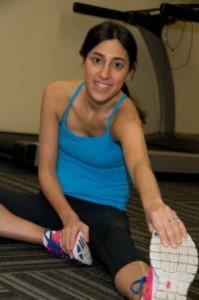 Combining Meditation and Exercise in Your Practice
Combining Meditation and Exercise in Your Practice 
by Ilana Milstein, personal trainer & Pilates instructor
 Combining Meditation and Exercise in Your Practice
Combining Meditation and Exercise in Your Practice 
by Ilana Milstein, personal trainer & Pilates instructor

 By Elisabetta D’Avenia, personal trainer
By Elisabetta D’Avenia, personal trainer
 Rituals To The Rescue
Rituals To The Rescueby Susanne Alberto, NSCA-CPT, TPI-CGFI/FP3
One of the definitions of a ritual, according to Merriam-Webster, is an act or series of acts regularly repeated in a set, precise manner. Many of us might not be aware of our rituals. But, they are there, so that we can complete an overall routine.
In many ways, a fitness program design is a ritual. You perform some dynamic joint mobility warm-ups, movements to stimulate the central nervous system, strength or cardio training movements in a particular order, and then a cool-down. All of these are performed with some intent or purpose.
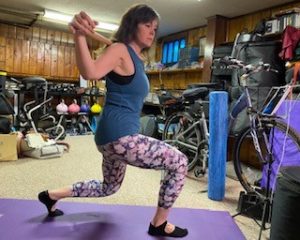 During a crisis, such as the current one – which we have never experienced before – rituals can come to the rescue! They provide us with structure, familiarity, comfort and control when everything seems like it is completely out of control. When fear of the unknown is the reigning emotion, what do we do? We trust in what we DO know and focus on the positives, no matter where we find them and no matter how big or small they are.
During a crisis, such as the current one – which we have never experienced before – rituals can come to the rescue! They provide us with structure, familiarity, comfort and control when everything seems like it is completely out of control. When fear of the unknown is the reigning emotion, what do we do? We trust in what we DO know and focus on the positives, no matter where we find them and no matter how big or small they are.
The following is a list of my daily rituals. While some have been modified to reflect the current crisis, I focus on the rituals themselves and their purposes:
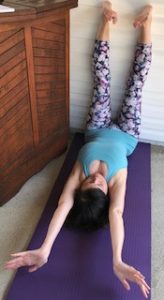 My previous commute time is now devoted to all the educational reading and video viewing, and online marketing that I want/need to do.
My previous commute time is now devoted to all the educational reading and video viewing, and online marketing that I want/need to do.
While my daily rituals might look different than yours, what we will have in common is that we all have them. Trust them – and you – to get yourself through!
Susanne is ready to give you a hand. Contact Susanne today!
 by Lisa Snow, personal trainer
by Lisa Snow, personal trainer
By Otis Collier, personal trainer



by Susanne Alberto, NSCA-CPT, TPI-CGFI/FP3
As a National Strength & Conditioning Association Certified Personal Trainer, as well as a Titleist Performance Institute Certified Golf Fitness Instructor, my primary responsibility is to design strength/conditioning, mobility/flexibility and cardiorespiratory programs for clients. My involvement with nutrition is legally limited to offering the basic science, so clients can make educated decisions for themselves. However, that doesn’t always seem to work out.
I have a female client in her early ’60s who chose a vegan lifestyle for “health reasons.” The only time I discussed nutrition was to suggest she increase her protein intake to support muscle building from the resistance training we were doing to combat her osteoporosis. So, her diet consisted of mainly plant proteins (carbs), starches (carbs), fruits (carbs) and healthy fats. After her most-recent physical, she was shocked to find out that she is pre-diabetic. After all, she isn’t fat or overweight, and she was eating healthy – right? I explained that even though she was eating healthy, her diet consisted of almost all carbs. And, as humans age, we lose the ability to process them efficiently as we once did.
Since there is so much confusion about carbohydrates – to the point where CARB has become a dirty word to some people – I want to try to clear up some of the confusion.
WHAT IS A CARBOHYDRATE?
A quick search on Wikipedia says, “A carbohydrate is a biomolecule consisting of carbon (C), hydrogen (H) and oxygen (O) atoms, usually with a hydrogen-oxygen atom ratio of 2:1 (as in water) and thus with the empirical formula Cm(H2O)n (where m may be different from n).” That is why you’ll see carbohydrate abbreviated as CHO. Wikipedia continues, “The term is most common in biochemistry, where it is a synonym of saccharide, a group that includes sugars, starch, and cellulose.”
THE MAJOR DIETARY CARBOHYDRATES
According to Wikipedia, there are three classes of carbohydrates, based on their degree of polymerization (DP). The DP is a key characteristic of polymers that determine physical properties of polymer materials. Polymers are large molecules that consist of repeating structural (monomer) units.
* Monosaccharides – glucose, galactose, fructose, xylose;
* Disaccharides – sucrose, lactose, maltose, trehalose;
* Polyols – sorbitol, mannitol.
* Malto-oligosaccharides – maltodextrins;
* Other oligosaccharides – raffinose, stachyose, fructo-oligosaccharides.
* Starches – amylose, amylopectin, modified starches;
* Non-starch polysaccharides – glycogen, cellulose, hemicellulose, pectins, hydrocolloids.
EXAMPLES OF CARBOHYDRATES
Now that your eyes have finished glazing over … I hope the above list will help you recognize a carbohydrate in all its various forms. In laymen’s terms, carbohydrates are found in a wide variety of natural and processed foods:
* Sugars appear in the human diet mainly as table sugar (sucrose, extracted from sugarcane or sugar beets), lactose (abundant in milk), glucose and fructose – both of which occur naturally in honey, many fruits, and some vegetables;
* Starch (a polysaccharide) is abundant in cereals (wheat, maize, rice), potatoes, and processed food based on cereal flour – such as bread, pizza or pasta;
* Cellulose (a polysaccharide) is found in the cell walls of all plants and is one of the main components of insoluble dietary fiber (helps maintain a healthy digestive system).
Coming next issue: Part II – What Is the Function of Carbohydrates?
I Always Share This With My Clients…
Amanda Treadway, personal trainer

 THE NO-EXCUSES BODYWEIGHT WORKOUT: PART 3 – The CORE
THE NO-EXCUSES BODYWEIGHT WORKOUT: PART 3 – The CORE
by Susanne Alberto, NSCA-CPT, TPI-CGFI/FP3
Last month, we featured the lower-body movements.
In case you missed it, the first article in this series featured lower-body movements and the second featured upper-body movements. However, many upper-body movements require some sort of device to help us resist gravity, such as a pull-up/chin-up bar or a pull-down cable/band. So, we included movements that also work the core, such as push-ups and planks, because the upper limbs are attached to the core.
Many people think “the core” is synonymous with the abdominals (a.k.a. Abs). Still others think the abdominals are limited to the muscles named “abdominal” (Rectus and Transverse). Without going into a hardcore (no pun intended) anatomy lesson, the core (torso or trunk) is the section of the body from the neck to the groin, excluding the head and limbs.
According to The Classic 1860 Edition Gray’s Anatomy (2008 edition), the muscles of the trunk may be subdivided into four groups:
* External Obliques (largest and outermost of the three flat abdominal muscles),
* Internal Obliques (flat muscles lying below the External Obliques and above the Transverse Abdominus),
* Transverse Abdominus, a.k.a. TVA (flat muscle layer of the anterior and lateral abdominal wall),
* Rectus Abdominus (vertical paired muscle on each side of the anterior abdominal wall),
* Pyramidalis, (small, triangular muscle located anteriorly to the Rectus Abdominus),
* Quadratus Lumborum, a.k.a. QL (paired muscle of the left and right posterior abdominal wall);
In the grand scheme of things, it’s important to have a general understanding of the complexity of the core and why it’s so critical to human function and movement. However, for the purpose of this article, we’re focusing on the muscles most identified with the core – the abdominals (all of them).
According to Gray’s Anatomy, “The abdominal muscles perform a three-fold action.” The VERY short version is:
In order to completely work the core, choose exercises and their variations in all planes of human movement and resisting said movement, including:
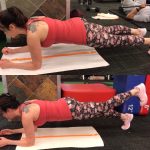 * Prone (Face Down) – Planks, Bird Dogs, Supermans, Mountain Climbers;
* Prone (Face Down) – Planks, Bird Dogs, Supermans, Mountain Climbers;
* Sagittal (Front/Back) – Standing Bracing, Seated Knee Tucks/Extensions;
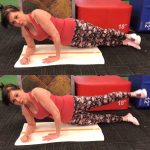 * Frontal (Lateral) – Side Bends, Side-lying Planks;
* Frontal (Lateral) – Side Bends, Side-lying Planks;
* Transverse (Horizontal) – Pallofs, Russian Twists (knees together!);
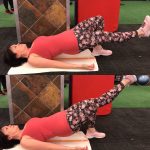 * Supine (Face Up) – Bridges, Crunches, Sit-ups, Leg Raises, Flutter Kicks, Scissors, Jackknifes/V-ups;
* Supine (Face Up) – Bridges, Crunches, Sit-ups, Leg Raises, Flutter Kicks, Scissors, Jackknifes/V-ups;
* Hybrids – Alternating Wide-stance Toe Touches, Bicycles, Burpees.
As with any health and fitness endeavor, get clearance from your appropriate medical professionals. If you need help designing a program, ensuring you have correct form, etc., always contact a Certified Fitness Professional.
Susanne is ready to give you a hand. Contact Susanne today!
5 Lifestyle Tips for Effective Mesothelioma Management and Treatment
8 Signs of Progress Along Your Fitness Journey
Debunking 5 Myths About Working with a Personal Trainer
The Six Benefits of Stretching
The Truth About Fitness Transformations
